NOTE: This is a machine assisted translation of a Russian paper by B.U. Rodionov * [alternate link] prepared by myself, Bob. W. Greenyer in the week beginning of 23rd January 2023. Although every care has been taken, including making it readable, there may be errors in translation, if anything critical is identified, please can the finder inform me so that I may edit accordingly.
Due to my observing and publishing physical evidence in line with several of the theoretical predictions made by Rodinov, including publishing of matching conclusions, I have given some illustrations and in-line links of some empirical evidence that were not part of the original paper. More examples will be added in time.
*Moscow Engineering and Physics Institute (State University)
115409, Moscow, Kashirskoye Shosse 31, Department 7, tel. 323-90-39
1. Basic form of matter
As we know, the Universe is filled with mysterious "dark matter", which astrophysicists estimate makes up at least 90% of the universe's total mass [1]. Consequently, it is dark matter (and not the atoms and molecules we know about) that is the basic form of matter in our Universe.
Let's imagine dark matter as consisting not of "clouds" of unknown to science hypothetical "point" particles (the whole "zoo" of which can be found in [1]), but from well known particles, but existing in nature as compactly connected long (including macroscopic - "infinite") threads of almost nuclear diameter. Such hypothetical threads we call fluxes (from Latin fluo - flow, hence "fluid" and "flux").
What might be the structure of such cosmic, geophysical or planetary threads claiming to be the dark matter of the universe? Let us consider the simplest version of the thread - a "cylindrical atom". A typical "cylindrical atom" "clad" by ordinary atomic nuclei interacting with it and depicted as black circles, is shown in Fig. 1, reproduced from our work [2].
Properties of fluxes as "cylindrical atoms" of quarks and electrons can be calculated by the usual formulas in physics - in the same way as the properties of ordinary spherical atoms are calculated [3]. The results of calculations are given in table 1 [2].
Table 1. Properties of fluxes
Flux length unlimited
Weight per metre of thread ~ 1 ng/m
Electron shell diameter ~ 60 fm
Filament fracture energy ~ 5 GeV
Electron binding energy ~ 5 MeV
Thread breaking force ~ 10 tonnes
Quark vortex diameter ~ 10 fm
Information density ~ 10^14 bits/m
Vortex electrical charge ≤ 0.5 C/km
Nuclear activity
Magnetic induction in vortex ~ 3.1^13 Tesla
Superconductivity
Magnetic field energy ~ 30 kJ/m
Waveguide, including for photons
2. Commentary on the properties of fluxes
Invisibility
The electric charge of the electron shell of a flux compensates the charge of its quark nucleus, and the magnetic fluxes are usually closed (see below). All this plus small (almost nuclear) diameter of fluxes explains their "invisibility" and almost free passage through ordinary atomic-molecular solids and liquids. Therefore, fluxes are still undiscovered, or rather "hidden" from us.
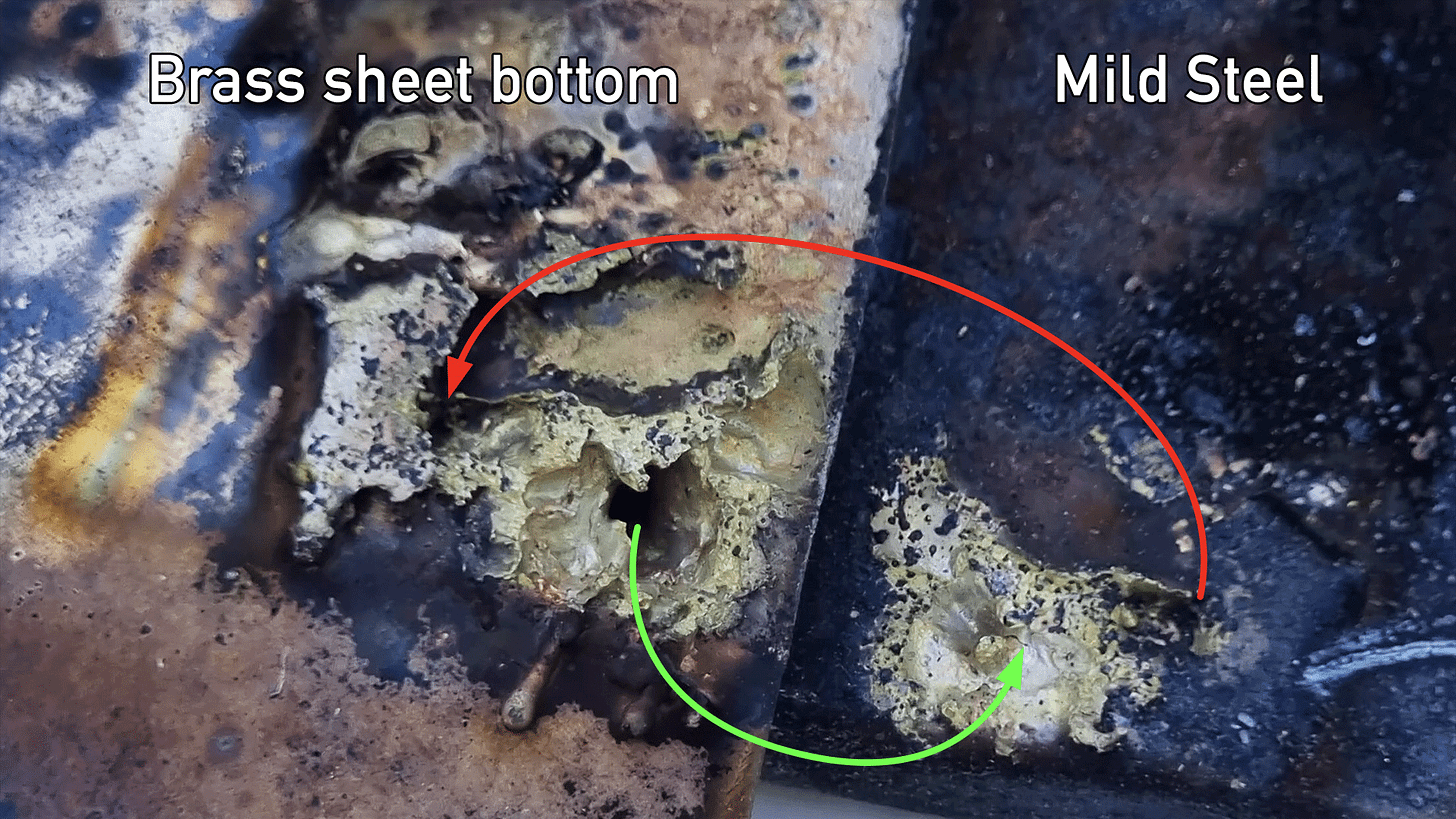

Fluxons and fluons
Like DNA molecules, fluxons can exist in the form of open or closed filaments (rings). The ends of an unclosed quark filament can be considered as its magnetic poles with equivalent magnetic charges multiples of the Dirac monopole charge (or half as much [3]).

The magnetic flux of a quark vortex can be short-circuited by the oppositely directed magnetic flux of its electron shell. Such a flux with two ends, but with the magnetic flux "hidden" inside it, we call a fluxon. Another way to reliably hide a flux's magnetic flux, is to coil it into a ring by closing its opposite magnetic poles. We call a flux ring a fluon. Diverse in properties (composition and mass), fluons can be what we call composite elementary particles (hadrons).
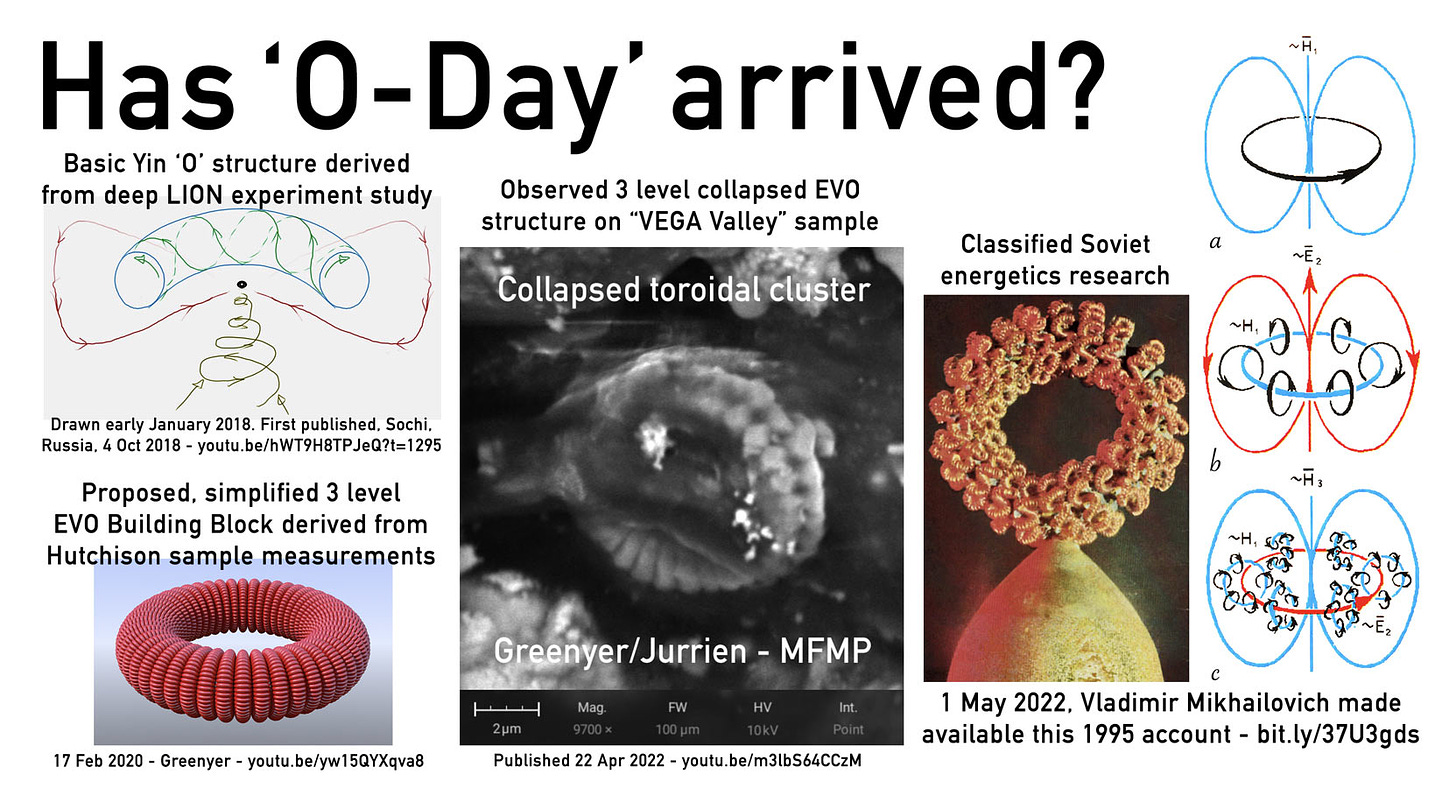
Long-range action
Representation of threads of dark matter as classical objects localized in space like thin fibers of ordinary cotton wool is somewhat naive. From quantum mechanics it directly follows that localisation - "pointness" of quarks and electrons is conditional - these particles (like any other) have a blurred existence (for the whole universe!) "clouds" with characteristic size of "points" of the order of a de Broglie wave length λ = h/p, where h is Planck's constant, p is the particle's momentum. Any kind of localisation of particles alongside the flux, on the flux or inside the flux "at a point", as well as the flux itself "on the geometric line" is prevented by the well-known Heisenberg uncertainty relation - where the small uncertainty of momentum projections of any object ∆ p on coordinate axes necessitates large uncertainty of coordinates of the object - of order h/∆ p. Therefore, all flux particles - quarks and electrons - are "smeared" along the flux (usually non-uniformly), and the flux itself is "smeared" in volume. A "smeared" single flux in a dense substance may simultaneously interact with a large number of atoms of this substance (and, in principle, even with all its atoms). That is, fluxes are capable of long-range action.
For example, an excited atom can transfer its energy resonantly without emitting a photon to another atom located at a macroscopic distance from the first one (say, a kilometre or a kiloparsec). But - only in the zone of the cylindrical flux cloud that binds them.
Superluminal velocities
The speed of light in models of fibrous ether (Bernoulli sponge type) is the speed of propagation of transverse mechanical vibrations along filaments (etheric vortices). In our case fluxes play a role of such "light guides" (see Fig. 1). And from the quantum-mechanical long range action, it immediately follows a possibility of realising superluminal speeds (even infinite ones), which has been predicted by theorists for a long time and in recent years has been confirmed in direct experiments with photons [4]. Instantaneous transmission of signals, energy and information, by fluxes makes all parts of the universe rigidly interconnected - something can not happen in one part of the universe without changing the state of all other parts of the Universe.
The electrons in a piece of metal, for example - in the wire of a telegraph line between Moscow and St. Petersburg, are just as tightly interconnected. Each electron of the countless number of conduction electrons, of this line, instantly "knows" the state of all others - otherwise the exclusion principle of equal states of fermions (Pauli principle) would not hold. Although, the electromagnetic signal, which carries information for us (exactly the signals we know how to use so far), travels along the telegraph line at a speed somewhat slower than the speed of light.
Localization barrier
Due to Heisenberg's relations, an atomic nucleus of mass M can localise in the electron shell of a flux (diameter D = 60 fm) if the kinetic energy of the nucleus
For many nuclei, T is of the order of 10 keV.
To overcome this "localisation barrier" (which is a thousand times lower than the Coulomb repulsion barrier of nuclei, that prevents nuclear fusion reactions from taking place), it is necessary to expend relatively little energy. The energy necessary to localise atomic nuclei on fluxes can be transferred to atoms during electric discharges or liquid cavitation, when crushing materials, or during their irradiation by light, neutrons or other particles. For localisation on the fluxes - carbon, iron and uranium nuclei should have velocities (relative to the flux) about 90, 20 and 5 km/s respectively. After localisation of nuclei on fluxes, their various transformations - flux-transmutations of nuclei are possible (see Fig. 1). Hence the possibility of alchemy, both ancient and modern, modestly now called "cold transmutations" of nuclei. Below we will use the term "flux transmutations", which directly indicates the flux mechanism of the observed nuclear transmutations.
Electrical properties
The electron shell and charged quark vortex provide the superconductivity of the flux, so fluxes of this type can be thought of as superconducting conductors. If the energy of the atoms surrounding the flux is less than the barrier of localization, then the flux located in ordinary matter (for example, in metal) seems to be surrounded by an ideal "vacuum insulator". With a difference in the electric potential of the flux relative to a substance of the order of 10 kV, easily realisable in experiments (or in nature - in thunderstorm clouds), the resultant strength of the electrostatic interaction of the flux "coaxial line” **, is sufficient to capture and move droplets and dust. This can lead to noticeable deformations in the surface of a liquid and the excitement of vibrations in strings crossed by flux. All these effects can be used for electromechanical registration of fluxes.
** The inner conductor is the flux itself, with a diameter of about 60 fm, the outer conductor is the electrons of the substance at a distance of 10^-8 cm from the flux.
Flux-Contact
Localisation of heavy nuclei of some matter on fluxes is capable of creating electrical contact between this matter and geo- or cosmic fluxes. It is interesting to observe experimentally a kind of "anomalous conductivity of vacuum" - the leakage of fluxes of mainly positive charges, from a body electrically isolated from the Earth, in which flux transmutations of nuclei are caused in one way or another. This kind of uncontrolled charge leakage can cause a high potential on satellites relative to the Earth, which may be one of the reasons for their observed accidents. The contact effect may also explain the sometimes observed powerful electrical impacts on Earth of meteorites, the so-called, electrophonic bolides.
It is known that auroras arise when solar plasma clusters (solar "plasma bolides") invade the Earth. Localisation of energetic solar wind protons on Earth bound fluxes (geofluxes) as well as localisation of heavy nuclei on fluxes in the Earth's interior, may cause electrification and lightning phenomena in the atmosphere, as well as a negative charge of the Earth (~0.6 MC) as a result of flux-contact. Moreover, nuclear transmutations in the atmosphere (during thunderstorms, auroras or meteorite fly-bys) will cause a predominant leakage of negative charges (electrons) into the atmosphere from the Earth's surface and locally charge the Earth's surface with a positive charge. Thus, these processes are capable of changing the Earth's "good weather" electric field (predominantly flux-transmutation of nuclei in the interior) to the opposite - "bad weather" (predominantly flux-transmutation in the atmosphere).
Elasticity
To deform a flux ring, a fluon with a single magnetic flux quantum and with a ring radius r, a force F of about 1 GeV/r must be applied [3]. At r of the order of the radius of the atom, F, about 0.4 kg, that is, the annular flux “spring” of atomic diameter, can withstand a non-deforming pressure of
This pressure is 5 thousand times higher than the pressure at the centre of the Sun. Since the flux ionisation temperature, corresponding to the shell electron binding energy of 5 MeV, is 5 thousand times higher than the temperature in the Sun's centre, and considering the strength of quark threads (Table 1), we conclude that fluxes are capable of creating a strong quasi-stationary three-dimensional spatial "lace" of the Universe - flux frames and invisible shells of planets, stars, comets, asteroids, plants, animals, tornadoes and whirlwinds.
Flux "anchors"
If the cell size of flux threads is close to the diameter of an atom, such fluxes can be firmly embedded into atomic and molecular solids. Flux threads with microscopic knots which we will call "anchors", with loop sizes of the order of the atom, are capable of lifting and moving heavy bodies (up to 10 tons), or destroying them with a thunder and rattle. Giant flux structures stretching for millions of kilometres (e.g. comet tails) may be attached to planets and comets by these flux "anchors".
Nuclear processes (flux transmutations)
Ordinary "spherical" nuclei with a non-zero dipole magnetic moment, are captured by fluxes (but not fluons or fluxons) especially intensively by their magnetic poles at their free ends. In this case, a power of about 10 kW is released in the condensed matter, mainly in the form of soft X-rays [3].

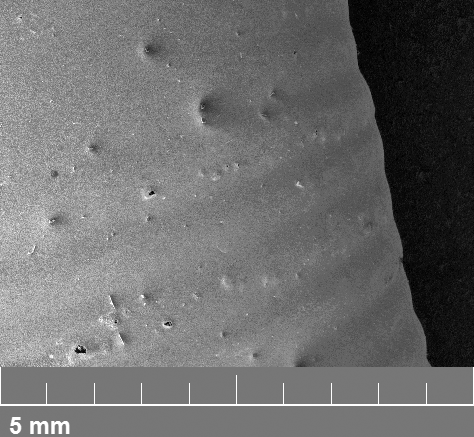
Less intensively, the capture, collapse and synthesis of ordinary spherical nuclei can occur on the surface of fluxes (and on the surface of fluons and fluxons). Fusion of ordinary nuclei on the surface of fluxons is possible because of the shielding of charge of these nuclei by the electron "liquid" of the fluxon shell, while the collapse of nuclei is possible because of e-capture (the capture of fluxon shell electrons by protons).
In the electron bose-liquid flux, an "extra" part of neutrons is likely to be ejected (leaked) from the captured nucleus. Free neutrons on the quark-gluon flux nucleus inside its electron shell can form a neutron Bose condensate (Fig. 1). When the cylindrical flux core ruptures, the neutron condensate can be captured by it and elongate the flux core, transforming into the quark vortex state typical of the flux core. A quark vortex may be electrically neutral, in which case, the flux (the whole or a part of its length) may have no electron shell. The energy released during all transformations inside the vortex is mainly released through the vortex itself, which explains the absence of radiation during transmutations of atomic nuclei. In the presence of sufficient energy, the flux may not only rupture, but even "spray", producing hadrons, leptons, photons. In the early hot universe, electrons, protons and neutrons formed by breaking (and spraying) fluxes, could have formed the observed atomic-molecular matter, the mass of which is known to be only a few percent of the dark matter mass (of fluxes).
Neutrino rocket
Consider an e-capture (p + e → n + νe) occurring in such a strong external magnetic field where the proton and electron (before capture) and neutron (after capture) would be lined up, that is, the orientations of their spins would align in the direction corresponding to the minimum energy of these particles in the magnetic field. The neutrino (with zero magnetic momentum) in these conditions also appears to be lined up, since, because of its inherent negative helicity (the spin is always directed against the momentum) to conserve the momentum of the original system, the neutrino must escape preferentially in the direction of the neutron spin, formed after the e-capture. From the known properties of the particles in question, it follows that the neutrino must escape preferentially in the direction opposite to the direction of the magnetic induction vector of the external magnetic field. In this case, the neutrino takes away from the source system not only energy and momentum, but also the momentum (equal to the neutrino spin).

Thus, e-captures in a strong magnetic field create, for the matter bound to this field, a reactive (with momentum p and angular momentum J) neutrino jet, due to which the matter must move in the direction of the magnetic induction vector and twist counterclockwise when viewed in the same direction.
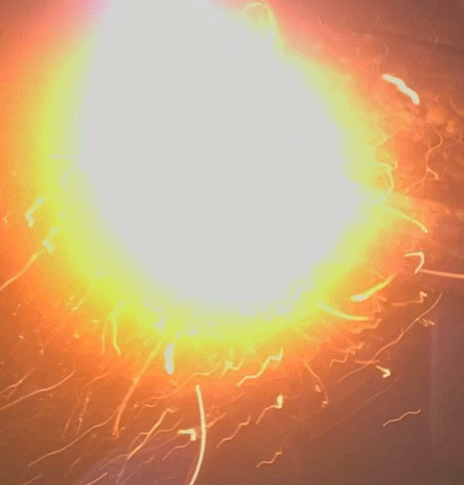
Assuming that during e-capture the neutrino takes away energy on the order of 1 MeV and where A is the e-capture activity in curies, let's find the reaction force F = dp/dt ≈ 2A ng and the momentum moment J ≈ 2A 10^-17 dyn.cm ***.
If 1 kg of air per second is involved in nuclear reactions,
A ≈ 10^15 Ci,
F ≈ 2 tons,
J ≈ 0.02 dyn.cm
(momentum J is further neglected).
*** NOTE: A dyne centimeter (dyn·cm) is a centimetre–gram–second unit of torque, a moment of torque force
A quantised magnetic flux is directed inside and along the fluxes, so a cloud of fluxes in air, for example, can move as a whole due to the reactive force F and/or unwind (if the total force F acting on the cloud is displaced relative to its centre of gravity). The nuclear activity of a flux cloud is represented mainly by neutrinos and, even if the activity is much higher than in the above example, it is difficult (but possible!) to register. The indicated mechanism explains the strangeness of the flight of possible flux structures such as UFOs, ball and linear lightning, as well as the rotation of tornadoes and whirlwinds and additionally "perpetual motion machines", if they are actually in operation anywhere. One should bear in mind that the energy of these "perpetual motors" is not taken from the "vacuum" or "gravitation field", as inventors usually claim, but arises due to flux-transmutations of atomic nuclei. That is to say, it is derived from nuclear energy.

Thermal properties
In the case of the existence of a cosmic "cotton wool", physics has to deal with fundamentally open systems, when energy, matter and information can arrive (or be withdrawn) to any point of space by threads. Rapid heating of matter is usually explained by its internal energy sources, but the observed sometimes sharp temperature drop (e.g., in poltergeists) seems to be quite mysterious.
When the thermal activity of the fluxes is negative, when energy is withdrawn from bodies through them, the substance can "freeze" near the filaments, dramatically changing their properties. For example, the radiation spectrum of "frozen" atoms and molecules may change, the spectrum lines of such matter becomes narrower and molecular bands (continuum of radiation) "break up" into separate lines (as in rarefied gases). This kind of surprising phenomena in dense media at room temperature are sometimes observed by biologists (the mitogenetic Gurvitch effect).
3. Some observable consequences
The global threaded nature of matter, may be related to the ability of fluxes to "string" atoms and molecules on themselves (like beads on the thread of a necklace). Indeed, we have threads in cells of organisms such as DNA, RNA, proteins, filaments, microfilaments and microtubules. In crystals, (including - biological ones) atoms and molecules are arranged on lines - on crystallographic axes, which are assembled into three-dimensional lattices. When isolated from solutions or the gas phase (and plasma), the most diverse substances form, sometimes "instantly” in pulsed processes for example complexly structured filament systems (like polymers).
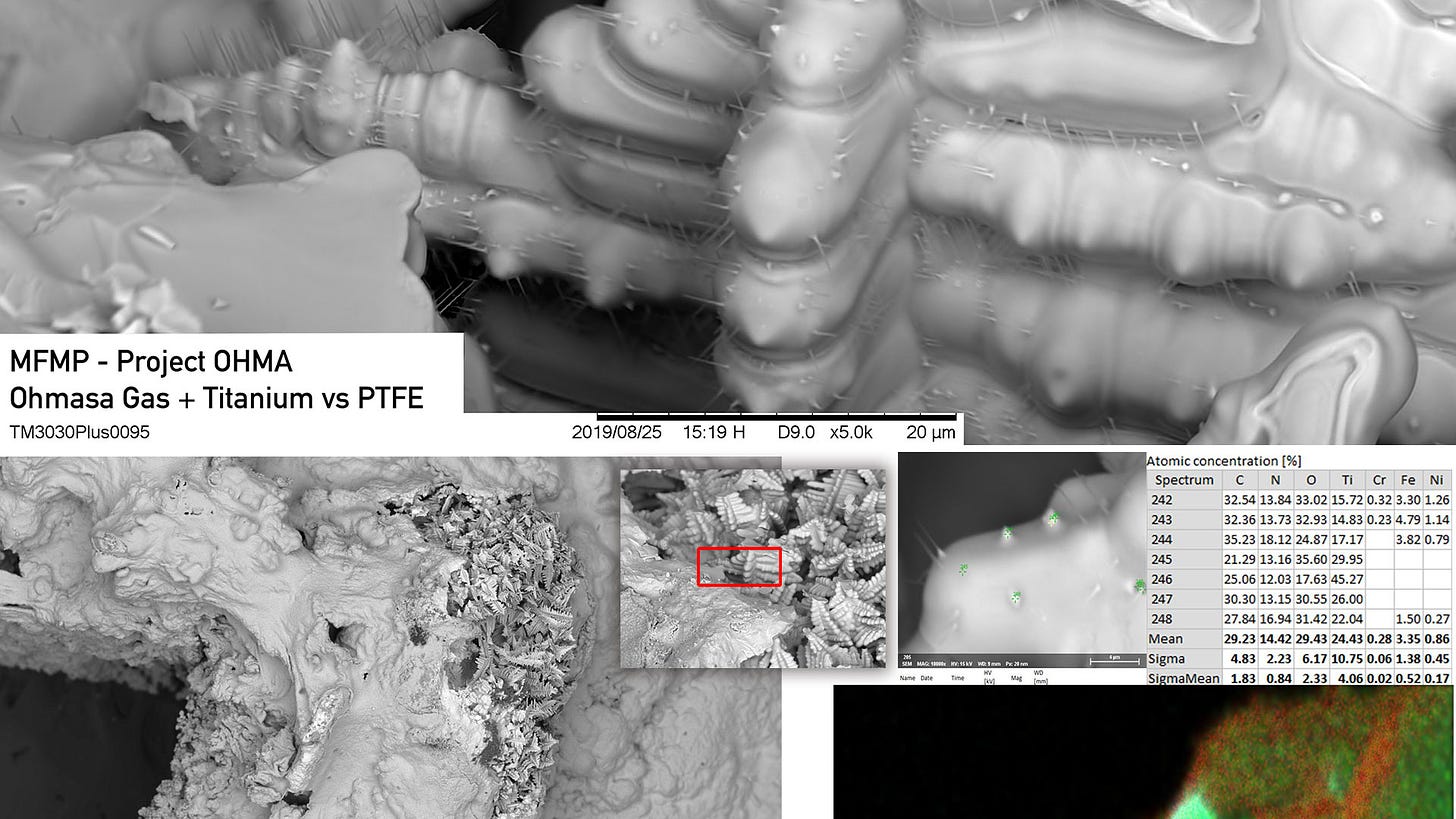
Such microscopic filaments are abundantly found by the author in samples taken at the places of natural disasters (the Tunguska explosion of 1908, tornadoes near Voskresensk and Sochi in 2001 and lightning strike sites). According to our investigations, the glassy minerals of bolide origin (E. V. Dmitriyev’s pseudotectites), appeared to be "balls" of quartz threads of a diameter of about 10 microns. Amazing threads of rare-earth metals, so called "angel hair”, are found in "UFO landing sites" (in samples by V A Chernobrov and others).
The true kingdom of threads is natural minerals. Here we find both nanotubes (in zeolites) and the molecular “lace” of jade, and fibers of a cat, tiger and other “eyes” visible even to the naked eye. Ulexite consists of natural light guides, through which images can be transmitted, giving it its nickname, TV-stone. No less mysterious are cymophane with parallel channels in chrysoberyl or noble opals made of strictly ordered identical silica balls. We are no longer surprised by the long fibres of asbestos, the "wire" metal nuggets, or the grand chains of mountain ranges. The linear relief on some planets (for example on Europa - a satellite of Jupiter) is similar to the micro-relief of minerals, the difference is only in the material (on Europa it is ice) and in the diameters of the threads. Respectively in minerals, their diameter is about 10 microns and on Europa it is about 100 m.
The flux genesis of crystals
An important argument in favour of the possible existence in nature of a material framework of invisible threads, on which atomic and molecular matter "settles”, is the existence of large crystals, the record holder being beryl at 380 tonnes. There are always such a large number of various defects in the volume and the faces of natural crystals, that the ability of crystals to grow to macroscopic size by the textbook "attaching atom to atom", seems mysterious. But how does a noble opal "ball to ball" grow?
In addition, large crystals are found in geologically active regions, where nature gives little time for the "atom to atom" accretion. The formation of "giants" and so called skeleton crystals with complex spatial architecture (snowflakes, dendrites and halite from Sodium Chloride molecules) can be explained by assuming that the primary micro-crystals, growing on threads of invisible framework, "atom-by-atom”, first form knots of thread clusters, with their preferential direction along their crystallographic axes, and thus, set angles and form of both the micro and macroscopic cells of the framework itself. Subsequent micro-crystals line up on the framework, filling its volume, so that even significant-sized inclusions and heterogeneities little disturb the architecture (the shape) of the emerging mineral. Nevertheless, in case of large inhomogeneities, the shape of the mineral, is determined by them. Apparently, this is how unique pseudomorphoses were formed, for example - an Australian opalised snake skeleton, or trunks of giant sequoias in Arizona, made of agate and jasper.
With the help of fluxes, one can also explain the amazing phenomenon of epitaxy on substrates, when the structure of the parent crystal, remotely determines the structure of the daughter crystal, through a thick (of the order of hundreds of angstroms), amorphous substrate.
Flux turbines
Due to nuclear processes (for example, transmutations, fusion of nuclei, and their capture of electrons) the filamentary dark matter from fluxes can acquire energy, momentum and angular momentum. Therefore, interacting with ordinary matter, it can act as an engine in natural processes (for example, spinning a tornado) or as an electric generator (Earth's dynamo).
Since "cotton wool" is capable of capturing water droplets and dust particles, flux clouds may be visible to the naked eye. It is possible that these are what tornadoes, (whirlwinds) are made of. A tornado's cylindrical coil, rotating about its vertical axis, is a neutrino "turbine" of dense dark matter, (the coil turns about 100 kg/cm^3 with a distance between the threads of the order of an atom) acting as an Archimedean screw. Such a screw is capable of lifting water (and any heavy objects) to a height of kilometres. If a tornado were an analogue of a hoover, it would be able to lift water no higher than 10 metres. Naturally, such hypothetical whirlwinds are capable of lifting Earth's rock into the air and leaving round craters (astroblemes) on the ground. Giant vortices, such as cyclones, hurricanes, sunspots and even spirals of galaxies may have a similar nature.
An electric current flowing in a vortex creates a magnetic field. The movement of other parts of the same helix relative to the field, can generate an electric current that amplifies it (as in a unipolar Faraday dynamo). This kind of electric generator, (dynamo) can act in the Earth interior and create its geomagnetic field. Recall that, due to the localisation barrier, even the fluxes in the iron core of the Earth, will behave as insulated conductors.
Vertical currents in the Earth's atmosphere
These currents, that noticeably alter the horizontal component of the geomagnetic field (and are many orders of magnitude greater than the known atmospheric ion currents), were discovered over a century ago. But so far their nature has not been established. The density of vertical currents in any point is found from the known configuration of the geomagnetic field. It varies from place to place. Usually these are fractions of μA/m^2, but there are some places on Earth where vertical current density is higher than 1 mA/m^2 [5].
From our point of view, vertical currents are currents on Earth fluxes (geofluxes). This can be verified experimentally: as geofluxes with the Earth's dynamo current flowing through them, can penetrate through a magnetic screen, rotating, for example, inside the magnetic screen a ring of magnetic material, so that the ring crosses the fluxes, an alternating electric current may then be generated in a coil toroidally wound on the ring.
The similarity of bolides, comets and ball lightning
Some bolides, like the Tunguska bolide, 1908, or the Chulymsky bolide (Tomsk), 1984, cause sound, seismic and electrophysical effects (such as burning of electric bulbs and radio interference), which precede their occurrence. Such bolides are called electrophonic. The Vitim Electrophonic Bolide that crossed the Siberian night sky between the 25th and the 26th of September, 2002, caused St. Elmo lights on the fence of the local airport and even lighted up lamps in the de-energised village of Mama (Irkutsk region). A perfect example of a brilliant (literally) flux of light!
The glow and shape of bolides is usually explained by the formation of plasma as air flows around them and their matter is blown away (ablation). However, in many cases, bolides do not leave a smoke trail in the atmosphere. In the most powerful explosions of the first two aforementioned bolides (the site of the Vitim bolide explosion has not yet been studied) no "meteoritic" matter was found.
The luminescence of comets is explained by the scattering of sunlight on the dust particles carried away by gas jets, when the Sun heats and evaporates the solid matter of cometary nuclei. Since the dimensions of cometary nuclei are on the order of a kilometre, whereas the luminous head 5, and the tail of the comet 6-7 orders of magnitude larger, the shape of the comet is determined not so much by the features of its nucleus, as by the processes of interaction of particles and gases emitted by the nucleus with the solar wind and the circumsolar magnetic field. But then how can we explain the observed variety of forms of luminous regions near bolides and comets with (sometimes) striking external similarity of these seemingly so different objects with each other and...with ball lightning? Simply, by considering that fluxes are a part of all these bodies and determine their properties, hithertoo mysterious to us.
For example, the energy of the solar wind is orders of magnitude too weak to explain the sometimes observed increase in the brightness of comets. The reasons of appearance of concentric bright regions (halos) extending from comets nuclei are unknown. The spectra of comets are mysterious and the mechanisms of rapid ionisation of molecules from the head to the tip of the comet tail are also not clear. What determines the variety of tail shapes, their disappearance, separation or rotation (sometimes even against the Sun). What causes the appearance of several tails on one comet or the division of the comet's nucleus into parts and, when the comet returns to the Sun, how does the comet regain its original form?
Let us assume that near bolides, comets and other celestial bodies (including the Sun and the Earth), as well as near ball lightning, there are flux shells which are much longer than the apparent dimensions of these bodies. Comet nuclei can be connected by fluxes to their head, tail, and possibly to distant planets and the Sun. Bolides may glow mostly not due to ablation, but, like comets and ball lightning, due to nuclear reactions (flux transmutations). Bolides and ball lightning can interact "ahead of time" with the surface of the Earth, causing it to shake, can break trees and carry heavy objects from place to place (remember the flux "anchors"). Nuclear reactions on fluxes can cause a sharp change in the brightness of comets, the appearance of haloes, the collapse of comet nuclei, as well as explosions of bolides and ball lightning. The glow of oscillating fluxes and their changing spatial configuration can determine the shape, spectrum of the glow, the dynamics of optical and electrophysical processes of Bolides, comets, ball lightning, as well as the features of their interaction with terrestrial matter.
Ophthalmology in space
After dark adaptation, astronauts on orbital missions observe luminous flashes in their own eyes, which in 90% of cases are in the form of luminous lines, solid or discontinuous. Less frequently observed are glowing spots (sometimes with a bright core) and glowing concentric circles [see reference 6]. Sometimes the astronaut can even see "from where and to where" the spot of light, forming a luminous line, is moving. These facts, in our opinion, speak against the version based on registration in the eyes of ordinary cosmic particles (atomic nuclei [6]). To form, for example, a clear luminous line the ionising particle would have to pass through (or in close proximity to) the light sensitive elements of the retina, which is unlikely if only because of the curvature of the retina. If a retinal excitatory flux filament passes through the eye, the eye can perceive:
a solid luminous line - the projection of the thread onto the retina;
a broken line - if the trace of the thread on the retina crosses the blind spot of the eye;
a running light spot - if the point of intersection of the thread with the retina moves relatively slowly along the retinal surface;
a circle or concentric circles, if the thread has the shape of a cylindrical spiral, with an axis in the same direction as its movement and approximately perpendicular to the retina;
a shapeless light spot - if the moving filament is a poorly ordered spatial curve;
a spot with a bright core - if the spatial curve is predominantly concentrated around some axis approximately perpendicular to the retina and coinciding with the direction of filament motion.
Consequently, at a spacecraft’s orbital velocity of 8 kilometres per second, it is possible to localise heavy nuclei, included in elements of its construction and it is possible to excite the electron shells of fluxes due to nuclear transmutations occurring on them. Excited electron shells of fluxes can emit real photons appearing wherever there is a shell vibration, including those far from the point of capture of the nucleus which has excited these vibrations. The vibrations going along the filaments may be perceived by photosensitive elements of the eye, due to the real photons arising along the excited fluxes, and/or directly through virtual photons - electromagnetic contact.
Images carried by fluxes
Excitation of fluxes due to nuclear transmutations on their surface (flux transmutations), emission of photons by excited filaments and their effect on ordinary atomic and molecular matter (including human eye) is possible not only in spaceflight conditions. For instance, images of surrounding objects (leaves of trees or coins lying in a pocket) are sometimes found on the bodies of people struck by lightning. Sometimes a person sees in the direction of a linear lightning strike a luminous ball (ball lightning), though the place of strike itself may be obscured from the observer by trees or a building wall. In our opinion, the first two examples may demonstrate transmission of energy by hypothetical threads (as light by light guides) with subsequent fixation of image on human skin. The third example is a direct analogue of the ophthalmological process in an astronaut's eye (a combination of cases 4 and 5, or case 6). Let's note that "flux ophthalmology" does not cancel the reality of ball lightnings existence (in regards to them, see in the same collection, the author's article "Fire from ball lightning").
Fluxes can also be responsible for the exposure of films in cameras, including the formation of mysterious images (experiments by A.F. Okhatrin). Complex and dynamic gas-discharge patterns near various objects (organic and inorganic) placed on dielectric surfaces in a high-frequency electric field - the Kirlian effect - are widely known. And in these cases, luminous gaseous discharge plasma can develop along fluxes.
References
G.V.Clapdor-Klinegrothaus, K.Züber "Astrophysics of elementary particles", M. Ed. journal UFN, 2000. p. 496.
Г.В.Клапдор-Клайнгротхаус, К.Цюбер “Астрофизика элементарных частиц”, М. Ред.журнала УФН, 2000. С.496.B.U.Rodionov Thready (Linear) Dark Matter Possible Displays. Gravitation and Cosmology (2002), Supplement, v.8, p.214-216
A .Olkhovatov and B.Rodionov "Tunguska Lights", ed. "Laboratory of Basic Knowledge", M., 1999. C.240.
А. Ольховатов и Б.Родионов “Тунгусское сияние”, изд. “Лаборатория базовых знаний”, М.,1999. C.240.G.Nimtz New Knowled of Tunneling from Photonic Experiments. Proc.of the Adriatico Research Conf. “Tunneling and its Implications” 30 July – 2 August 1996, World Scientific Publishing Company. P.1-15
N.V.Kulanin, B.U.Rodionov Geomagnetic dark matter as a source of geomagnetic anomalies. Mashinostroitel, No4, 2000, p.56- 59
Н.В.Куланин, Б.У.Родионов Геомагнитная темная материя как источник геомагнитныханомалий. Машиностроитель, №4, 2000, с.56- 59S.V. Avdeev et al. Study of the characteristics of particles that cause ophthalmic phenomena in space flight. MePhI-2001 Scientific Session, Vol. 7, Moscow, MEPhI, 2001, pp. 53-54
С.В.Авдеев и др. Исследование характеристик частиц, вызывающих офтальмологические явления в космическом полете. Научная сессия МИФИ-2001, том 7, М., МИФИ, 2001, с. 53-54




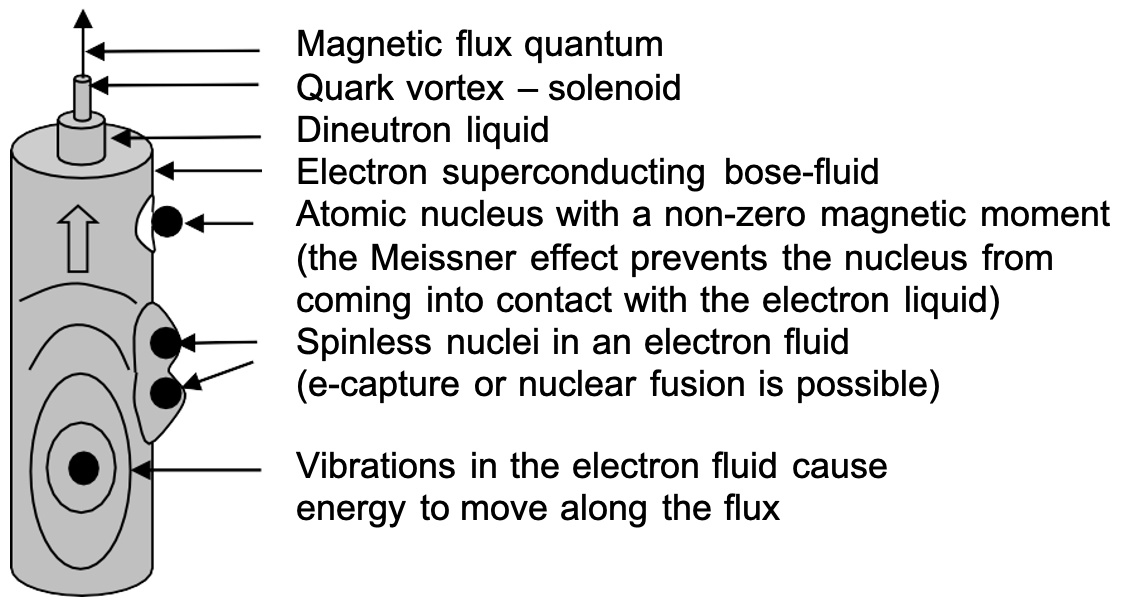

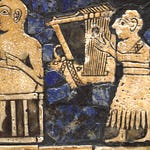




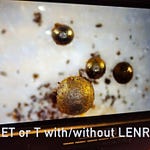


Share this post